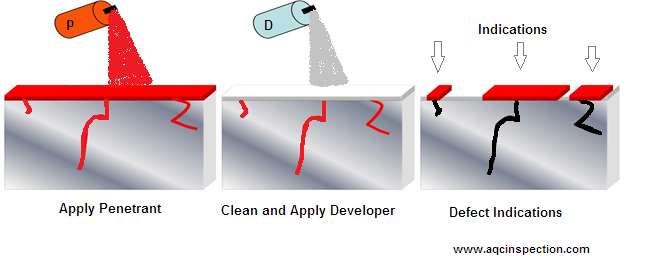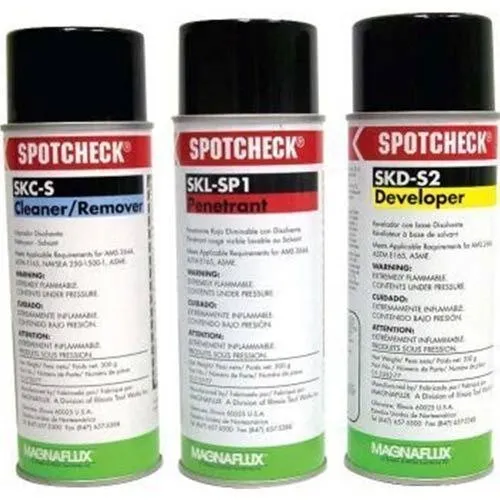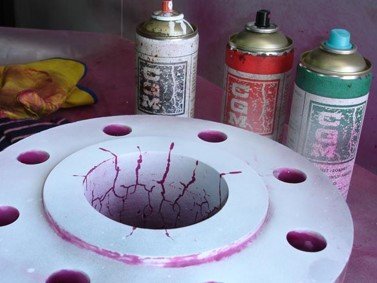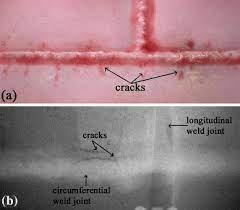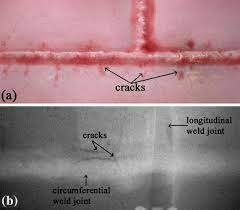
Contents
- Introduction
- Purpose of Dye Penetration Testing
- Why Dye Penetration Testing is Used
- Process of Dye Penetration Testing
- Manufacturers Using Dye Penetration Testing
- Limitations of Dye Penetration Testing
- Conclusion
1. Introduction
Crack dye penetration testing, also known as liquid penetrant testing (LPT), is a widely used non-destructive testing (NDT) method for detecting surface-breaking defects in non-porous materials. This method is particularly valuable in the maritime industry for inspecting engine components and other critical parts.
2. Purpose of Dye Penetration Testing
The primary purpose of dye penetration testing is to identify surface cracks, porosities, and other discontinuities that could lead to component failure if undetected. It is essential for ensuring the safety and reliability of maritime engine components.
3. Why Dye Penetration Testing is Used
- Safety: Identifying and addressing defects before they lead to catastrophic failures.
- Preventive Maintenance: Facilitating routine inspections and maintenance schedules.
- Cost Efficiency: Reducing the risk of major repairs and operational downtime by detecting problems early.
4. Process of Dye Penetration Testing
- Surface Preparation: The component’s surface is thoroughly cleaned to remove any dirt, grease, or other contaminants that could obstruct the penetration of the dye.
- Application of Penetrant: A liquid dye (penetrant) is applied to the surface and allowed to seep into any surface-breaking defects.
- Dwell Time: The penetrant is left on the surface for a specified period, allowing it to penetrate any defects.
- Excess Penetrant Removal: The excess penetrant is carefully removed from the surface, usually with a solvent or water, leaving the dye within the defects.
- Application of Developer: A developer is applied to draw the penetrant out of the defects, creating a visible indication on the surface.
- Inspection: The surface is inspected under appropriate lighting, often UV light for fluorescent penetrants, to identify any defects.
- Post-Cleaning: The component is cleaned to remove any remaining developer.
5. Manufacturers Using Dye Penetration Testing
Several manufacturers in the maritime industry utilize dye penetration testing to ensure the integrity of their components:
- MAN Energy Solutions
- Wärtsilä
- Rolls-Royce Marine
- Caterpillar Marine
- GE Marine
6. Limitations of Dye Penetration Testing
- Surface Limitation: Only detects surface-breaking defects; subsurface defects cannot be identified.
- Material Limitation: Not suitable for porous materials as the penetrant may seep into the material itself.
- Surface Preparation: Requires meticulous cleaning of the component surface, which can be time-consuming.
- Environmental Concerns: Disposal of chemicals used in the process must comply with environmental regulations.
7. Conclusion
Dye penetration testing is a vital tool in the maritime industry for maintaining the integrity and safety of engine components. Despite its limitations, it offers a cost-effective and reliable method for detecting surface defects, contributing to the longevity and performance of maritime vessels.
Detailed Process and Equipment
- Penetrant Types: Fluorescent or visible dyes, depending on the inspection requirements.
- Developer Types: Dry powder, wet developer, or non-aqueous wet developer.
- Inspection Tools: UV lamps for fluorescent penetrants, white light for visible dyes.
Manufacturers of Dye Penetrant Testing Equipment
- Magnaflux: Known for a wide range of NDT products, including dye penetrants and developers.
- Sherwin Inc.: Provides various liquid penetrant inspection materials.
- Chemetall: Offers penetrants and developers under the Ardrox brand.
- Met-L-Chek: Specializes in penetrant inspection materials for various industries.
In summary, dye penetration testing is an essential NDT method in the maritime industry, providing an effective means of detecting surface defects in critical components, thereby enhancing safety and operational efficiency.
Visit maritimehub.com for more.
